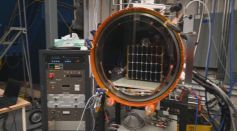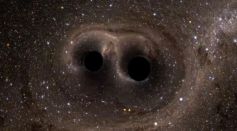Tags: Energy
Gold Standard Compound Possible Alternative for Thermoelectric Devices, Helps Reduce Waste Heat
Space Solar Power Could Revolutionize Energy As US Air Force Plans to Harvest This Unlimited Source
Crystal Defects at the Nanoscale Could Lead to Better Energy Storage Devices

Solar Power: What's Keeping Airports from Turning Into Giant Solar Farms?
Underwater Volcanoes Could Produce Enough Energy to Power the Entire US
Solar Energy from Space to Earth: US Air Force Developing Satellites for Transformation Taking Place in 2024
Perovskites Solar Cells Could Replace or Enhance Silicon

Electricity From The Body Could Power Pacemakers, Other Medical Implants

Energy From Space Could Soon Be Beamed Anywhere in the World Using the Space-Based Solar Panel

‘Goopy’ New Paste Can Ultimately Unlock Energy Potential of Clean Energy, Study Finds
Penn State, QorTek Fabricates Piezoelectric Device Still Effective in High Temperatures

Arranged Nanoblocks Help Improve Solar Cell Efficiency

Construction Begins on the Largest Solar Energy Farm in Texas

Biologists Attempt To Solve a Century-Old Paradox: The Reason Cancer Cells Waste a Lot of Energy

Anode-Free Zinc-Based Battery Is the Future of Renewable Energy Storage

Scientists Lay Down A Wild Plan to Harvest Energy From Black Hole

Floating Power Station: Ex-NASA Researcher Develops Unlimited Clean Power for Earth
New Super-Absorbent Film Uses Sweat to Power Wearable Devices

How to Reduce Carbon Footprint: Easy Ways to Fight Climate Change on 2021
Using a Single Image, Scientists Changed People’s Insight of the Sun
Most Popular

Extreme Weather Science Reveals How Climate Change Patterns and Global Warming Transform Earth's Weather

What Causes Tornadoes and How They Form: Tornado Science Explained for Extreme Storms

Why Pandemics Keep Happening: Pandemic Cycle and the Rise of Emerging Diseases

How Planets Form: Planet Formation and Protoplanetary Disks in Solar System Creation





